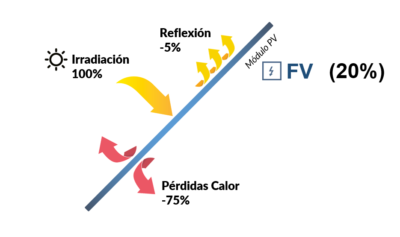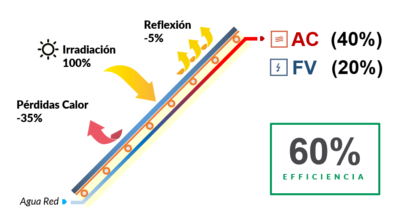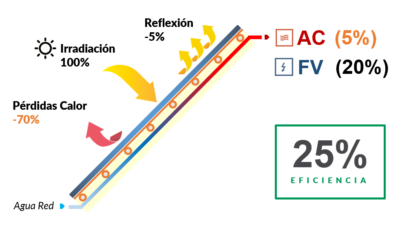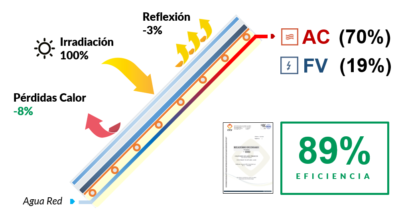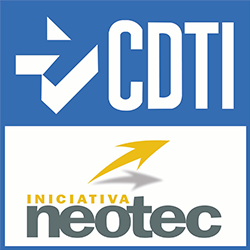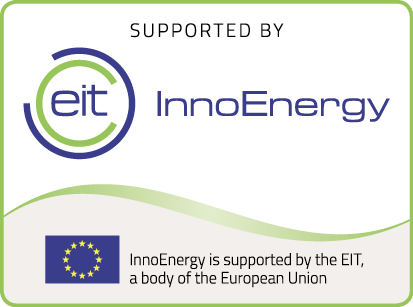Do you know the different types of solar panels?
Regardless of the solar technology, its characteristics or its price, a solar panel uses solar energy to transform it into either electricity or heat, or electricity and heat in the case of hybrid solar panels. Each solar panel has its own technical characteristics, performance and price. Let’s take a closer look at the different types of solar panels.
What are the different types of solar panels?
In common parlance, the generic term “solar panels” is used to refer only to photovoltaic solar panels. However, it is extremely important to remember that the term “solar panels” refers to three types of solar panels:
- The photovoltaic solar panel, which transforms the solar energy received into electricity.
- The thermal solar panel, which transforms the solar energy received into heat, enabling hot water to be produced.
- The hybrid solar panel which transforms the solar energy received into electricity and heat simultaneously.
– The photovoltaic solar panel –
The best known solar panel is the famous photovoltaic. It is the one that everyone hears about in everyday life, especially since the explosion of interest in renewable energy. The photovoltaic solar panel is made up of photovoltaic cells which enable it to generate electric current when the sun’s rays strike it. There are four main types of photovoltaic panels:
- The crystalline silicon solar panel (monocrystalline) is composed of a single silicon crystal. The monocrystalline solar panel has a darker appearance than the polycrystalline panel. In general, it is composed of a single crystal, which allows a very efficient yield of 14 to 18%. However, this type of panel is very expensive because it is difficult to produce.
- The crystalline silicon solar panel (polycrystalline) consists of several silicon crystals. Its blue colour makes it much more visible and therefore less attractive. Polycrystalline panels are less efficient than monocrystalline ones. Nevertheless, their simpler manufacturing process makes them more affordable.
- Amorphous silicon solar panels are more flexible than crystalline silicon. Amorphous silicon is generally used as a solar membrane, and is therefore easier to install than conventional panels due to its flexibility. However, its ease and lightness come at a price: their efficiency is generally only 8%, which is still very average. On the other hand, they are generally less expensive to install.
- The copper, indium and selenium (CIS) or copper, indium, gallium and selenium (CIGS) solar panel. Here, the raw materials for CIS or CIGS cells are much more readily available than the silicon used in conventional photovoltaics. Their energy conversion efficiency is the highest to date for thin-film photovoltaic cells but they require a larger surface area to achieve the same efficiency as crystalline photovoltaic panels.
Most solar panels are single-sided, i.e. they convert the sun’s rays into electricity only through their front surface. However, the two-sided solar panel has been developed over the last few years, which makes it possible to use the albedo effect. The albedo effect refers to the phenomenon whereby any surface reflects the sun’s rays that it receives. Thanks to the photovoltaic collectors located at the front and back of the solar panel, a bifacial module can therefore produce more electricity than a single-sided panel for the same amount of sunlight.
– The solar thermal panel –
A solar panel is not only intended to produce electricity, contrary to popular belief. In fact, thermal solar panels can be used to produce domestic hot water (DHW). In concrete terms, this type of solar panel consists of a circuit through which hot water or a heat transfer fluid flows. In the first case, nothing very complicated: the hot water circulates in pipes directly exposed to sunlight. In the second case, the heat transfer fluid is first heated by the sun’s rays before being sent to a hot water tank. It can then give its heat back to the hot water circuit.
In summer, this type of solar panel can provide all the hot water a home needs, especially for homes with a swimming pool. However, when the cold weather arrives, the thermal solar panels are insufficient. To compensate for this, it is necessary to install a back-up heater to take over when temperatures are too low.
– The hybrid solar panel –
Is it possible to produce electricity and hot water at the same time with the same panel? Of course, it is the famous hybrid solar panel that offers a two-in-one solution! In concrete terms, this type of solar panel is made up of photovoltaic cells on the front and high efficiency thermal collectors on the back. The interest of this device is multiple. First of all, a hybrid solar panel allows for increased energy savings compared to a conventional solar panel. Both electricity and heating needs can be partially met.
Secondly, when exposed to the sun, photovoltaic panels can reach very high temperatures – up to 80°C. Thermal collectors are used to prevent overheating and to maintain the efficiency of the panels despite the high temperatures.
What are the different efficiencies of solar panels?
Let’s talk about the efficiency for those solar panels. Generally speaking, the photovoltaic solar panel is capable of capturing approximately 20% in the form of photovoltaic energy. The remaining 80% of energy is lost due to reflection of the sun’s rays and mainly heat loss.
The classic PVT, without insulating crystal on the front, on the other hand, integrates a photovoltaic panel and a water circuit at the back. In theory, it converts the heat loss from the back of the panel (40%) into solar thermal energy. This implies an efficiency of 60%.
However, in practice we are far from this. In fact, if we increase the output temperature of the panel to 60ºC, almost all the heat from the rear side is lost through the front side. The efficiency drops to 25ºC.
Therefore, the increase in cost of a first generation hybrid compared to PV is not justified by only a 5% increase in performance.
The hybrid solar panel from Abora Solar is equipped with aHTech technology to reduce heat loss. The solar thermal energy increases to 70% and the photovoltaic to 19%. The performance of the hybrid solar panel with aHTech is therefore 89%. The aHTech technology has made the solar panel the most efficient solar panel on the market with an energy production equivalent to 4 photovoltaic solar panels and The key is to avoid heat loss as much as possible and to transform it into thermal energy. In this way, only 8% is lost in heat and 3% in reflection, achieving the solar record of 89% efficiency.
What are the different methods of installing solar panels?
Finally, it is important to know that there are several ways to install solar panels. The type of installation will depend on the type of building and the installation, but also on the model of solar panel chosen.
Here are the three existing methods of installing solar panels:
- Rooftop installation: This is the classic installation of a solar panel. The panels are fixed to an existing roof, which allows them to store energy.
- Flat roof installation: It is also possible to integrate solar panels directly into the structure of a building. In this case, the solar panels are fixed directly to the roof structure. This kind of instllation is only possible for the buildings which have a flat roof.
- Ground mounting: Finally, it is possible to install a solar panel directly in a garden. However, this type of installation is reserved for thermal and hybrid solar panels, in particular for heating a swimming pool or the water in the building. It is not very effective for photovoltaic panels, which will receive more solar energy if they are high up.
To calculate your hybrid installation, we invite you to fill in our My Hybrid Project or to contact us directly where we will answer all your questions!
Share this article on your social networks
Subscribe our Newsletter!
External news
Featured Post
Recent Posts
Related Posts…
Write us, we will answer you as soon as possible.
Responsible for the data: Abora energy S.L.
Purpose: Sending emails with news and offers.
Legitimation: Your expressed consent.
Recipient: Subscribers’ list in Mailchimp.
Rights: Access, rectification, elimination, anonymity, portability and forgetting data.



